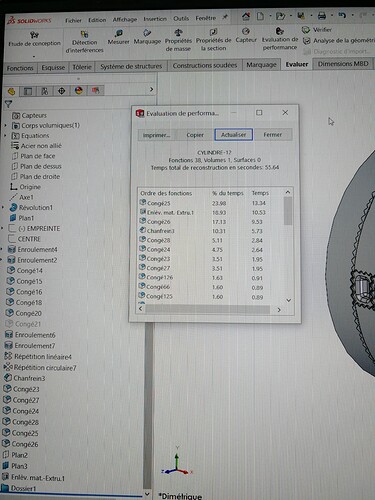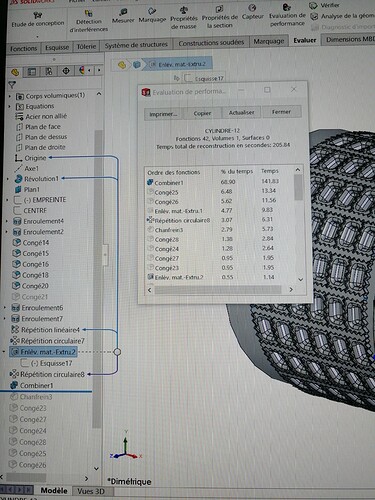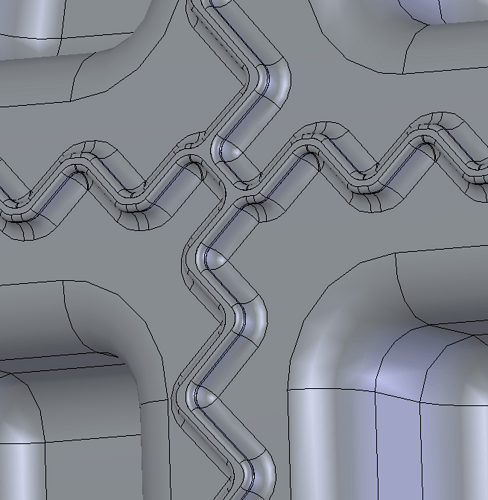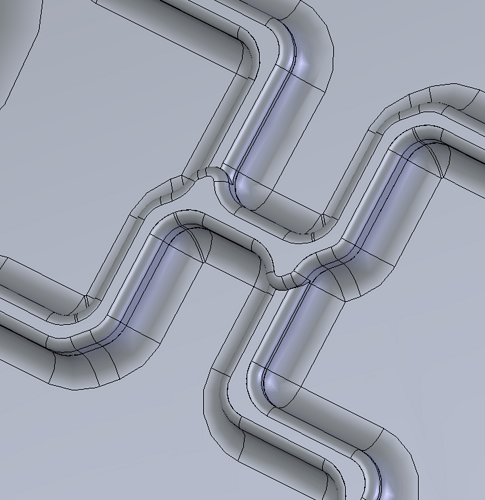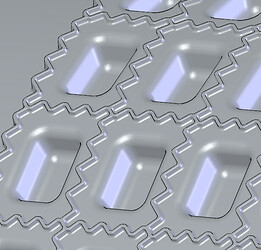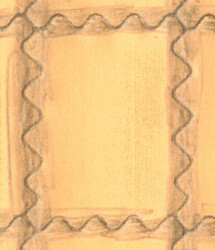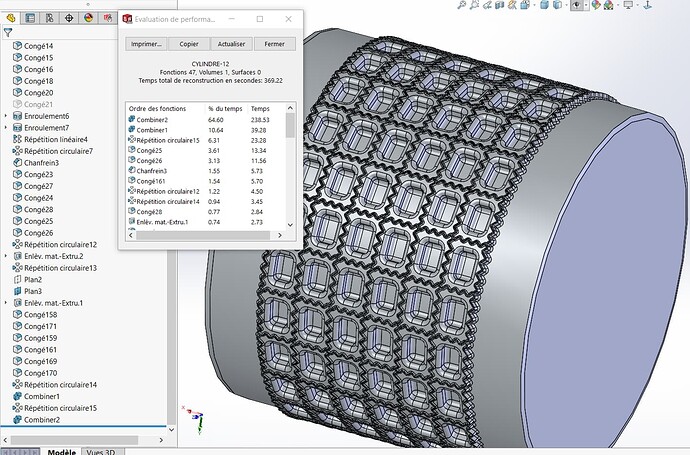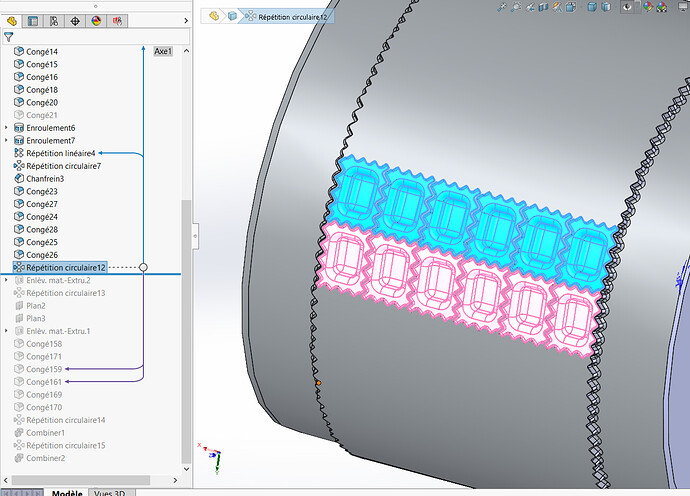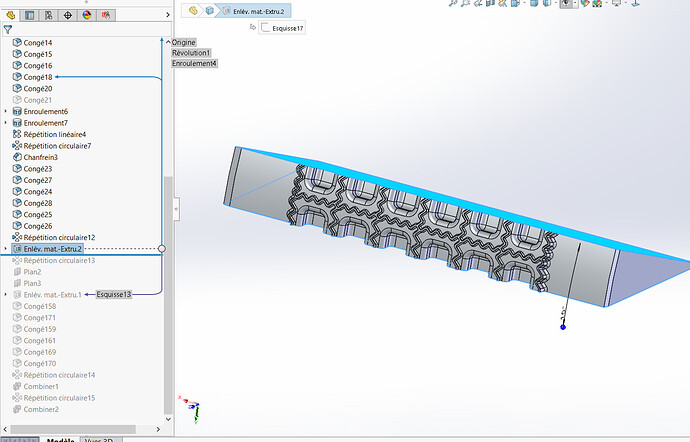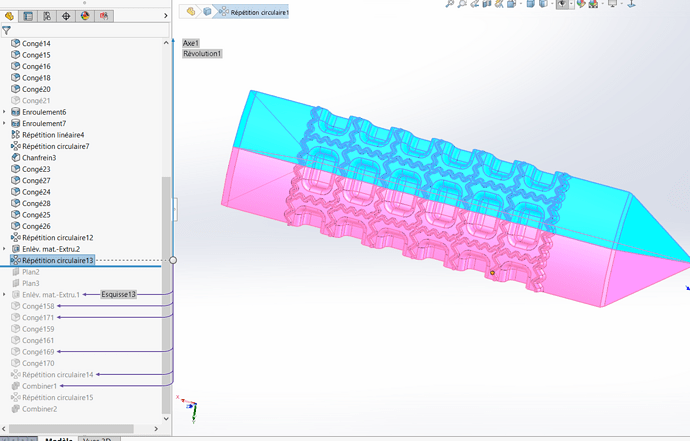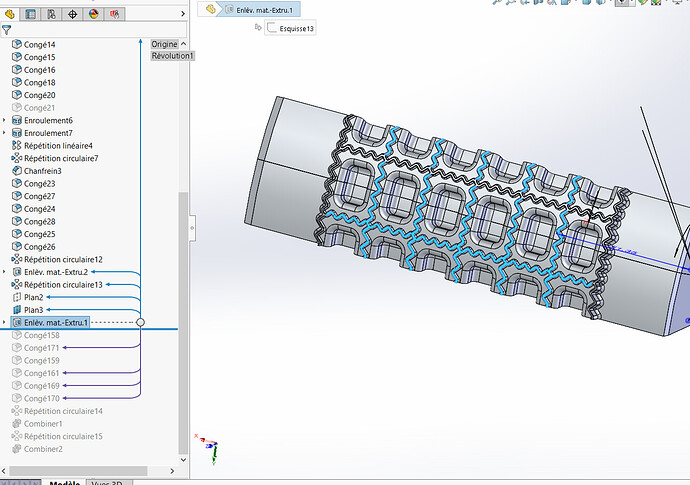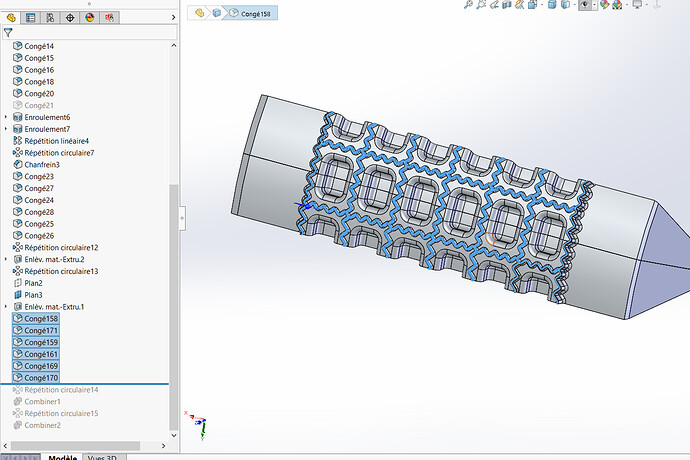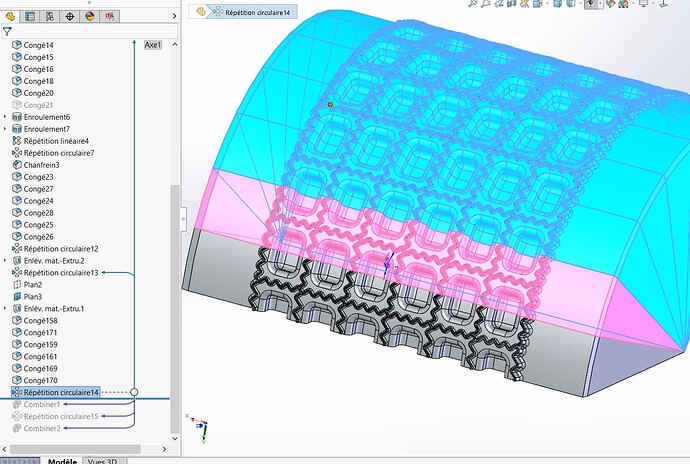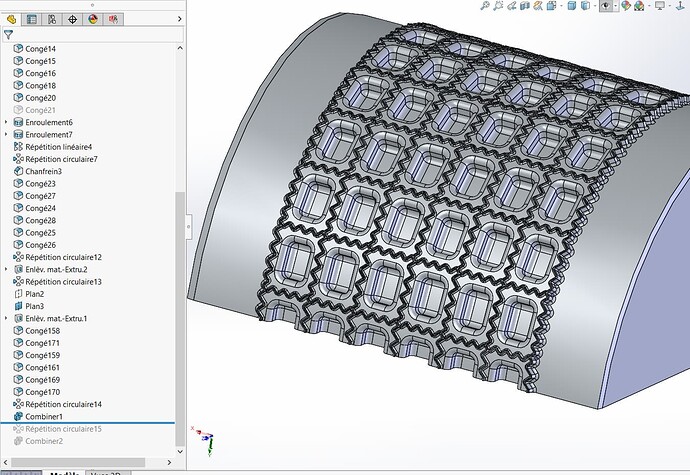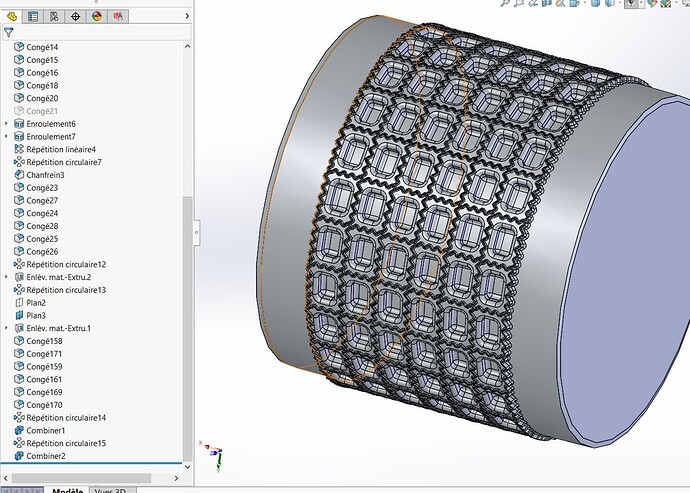Hello
I rebuilt in 3D a shaped cylinder for ravioli.
On the other hand, I have 1500 seconds of reconstruction.
I would like to know if in my case there will be any tricks to reduce this time.
Have a nice day
Patrik
Hello @PatrikGo
You should show us everything that happens before your circular rehearsal.
In particular because it is your multiple vacations that are time-consuming.
The way, or rather the order, in which you declared them can also affect the speed of execution.
What makes molds or surface should be able to tell you a better way to proceed
Kind regards
As Zozo says so well, it is the number of leaves that must be blocked.
I would proceed as follows:
Make a ravioli shape with its rays and then repeat faces by selecting all the faces of your shape.
Beautiful piece!! I find
The function that is wrong is circular repetition 12 (repetition of function with repetition of geometry)
With body repetition it's clearly lightened
For an assembly
The use of the blocking bar or a simplified configuration makes sense,
Good evening @PatrikGo
I managed to open your file with a lot of time.
My analysis differs very slightly from @Lynkoa15 (which I welcome in passing) but which I agree with on many points.
1°) It must be remembered that the mould is used for ravioli dough of a specific thickness. What we don't know is if there is the same cylinder on the other side or if the roll of dough that ensures the closure is made further on the station
2°) my remark on the 1°) makes me say that you sin, if I dare say so, by excess of precision on the rays at all costs.
3°) the depth of the beach that is used to glue the two parts of the ravioli is only 1mm deep. Depth to which you add a radius of 0.5 mm while it is the dough that will make the rays by itself, especially if there is a counter-mold for forming the dough a priori.
In addition you make a radius of 0.15 on the radius (leave 21)
3°) I think it's a mistake to want to make a winding that is not ultra precise and that is very time-consuming
4°) rays 34 to 36 are superfluous because they are not very useful and could be done differently
5°) Circular repetition 12 is the one that kills.
In short, I don't see why you are looking for such precision in the shelves for a paste
@soring round threads are not threads but shapes that allow the pre-cutting and closing of the ravioli (it depends on the machine and whether the ravioli are bagged flat in a PVC blister or loose in a bag
@PatrikGo
You should tell us who imposes his rays on you and for what purpose.
The repetition must be done differently in slices as proposed by @Lynkoa15 indeed we must not confuse machining in real life with the way to do it in SW.
In addition, for machining, if you want to do this other than by electro-erosion, the CNC mileage blow with ball cutters will cost you the price of a porch.
Anyway the discussion continues
How to help you!
Kind regards
Hello.
Thank you very much for your feedback
I'm going to answer on the general thread to all of them
@Lynkoa15 : I did think about creating just one sector, but interlacing to have beautiful crosses is problematic. In addition, you have to manage the continuity of the rounding, if you want to do it before too.
for the height shift every 8 ravioli, yes it's intentional (even if it's not optimal visually)
@Zozo_mp : I took the general dimensions on the roller and it's a nice part indeed (steel and Teflon coating)

I then reproduced the footprint by layer. I had a lot of trouble matching the parallels and the transversals, ... so that the repetitions can adjust to the hair
I used the winding because it was the first idea that came to me when I saw the cylinder for the first time...
I admit, the whole shelf file is excess, but at least the visual is close to the existing one I think.
Hello @PatrikGo
When I see the following image I think you can do the zigzags more simply because for me they have a draft so it is possible in CNC with a radiated cutter in a single pass.
You have a good part of the racking that is due to Teflon.
We should see how to use " stripped" cleverly.
I'll try to think about your PB.
To speed up Solidworks, I think you have to think like a plastics mold maker Imagine that each ravioli is a hollow part, totally finished, it must go faster to make the circular repetitions.
Kind regards
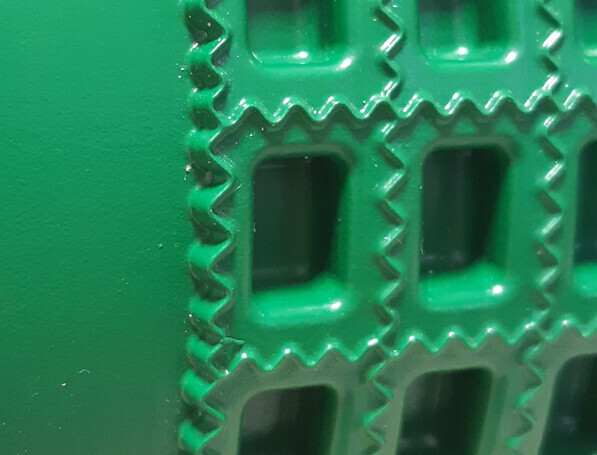
If you want to keep the holidays, I suggest the following.
The longest function to rebuild is the last combination, you can delete and reactivate it only if necessary
@Lynkoa15
I didn't have in mind to make this kind of neighborhood in this place. I imagined something more complicated, and that made me abandon the idea from the start. Thank you very much
I proceeded more or less the same and I went down to 300s of reconstruction (including 280s to combine it)
Thank you!
Hello @Lynkoa15
Very good method!
Just a question now how long does it take for the full model to open?
Kind regards
Hello @PatrikGo
Can you please post us the solution you finally chose, it's always interesting for everyone to share.
You can also please close the topic by selecting an answer. Thank you
Kind regards
Hello @tous
Patrik, it makes me happy,
Zozo, with an intel i7 11850h
By changing a dimension of the base sketch, it took 157s before the scheme.
A total reconstruction in 378s, difference of 9s than planned 
Hello
Repenting of faces rather than functions is already less greedy.
may the force be with you.
Hello
Personally, I will only use the exact shape for the detail plan of the room (and the steps/igs if necessary).
In the assemblies I would use a lighter configuration of the part (is it really useful to see each small ravioli mold??).


